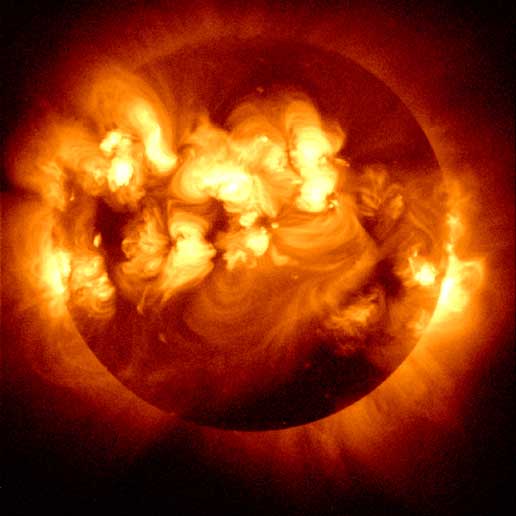T
The sun is the largest and most important object in our solar system – a huge glowing ball that provides, light, heat and energy to our Earth. However, our beneficial space neighbor is also capable of some stellar temper tantrums. How often do these “tantrums” occur, and what other quirky behaviors does our temperamental sun have in its bag of tricks?
On Thursday, Oct. 27, Dr. Jonathan Cirtain, a solar scientist at NASA’s Marshall Space Flight Center, answered your questions about how our sun works and produces phenomena such as sunspots, solar flares and solar storms – hot topics that have communication and health implication for everyone on Earth.
V
I
More About Chat Expert Dr. Jonathan Cirtain
Dr. Cirtain is an expert in Heliophysics and is the Hinode project scientist as well as the co-investigator on Hinode’s onboard X-Ray Telescope. He also has served on the science team for the Atmospheric Imaging Array, an instrument on the recently launched Solar Dynamics Observatory satellite. Additionally, Cirtain serves as the principle investigator for two sounding rocket experiments: the High Resolution Coronal Imager (Hi-C) and the Solar Ultraviolet Magnetograph Instrument, or SUMI. Hi-C will be launched from White Sands Missile Range on June 19, 2012 and SUMI will complete its second launch on June 12, 2012, also from White Sands.
Cirtain also is the institutional principle investigator for the Solar Wind Electrons, Alpha and Protons instrument or SWEAP, slated to launch no later than 2018 aboard the Solar Probe + mission to explore unprecedented regions in space, transforming our understanding of the sun and its effects on the solar system.
Cirtain came to Marshall in 2007 as an astrophysicist.
Among his numerous past achievements and honors, Cirtain received the 2011 NASA Medal for Exceptional Achievement for his work developing solar physics instrumentation and received the 2011 Presidential Early Career Award for Scientists and Engineers.
He graduated from the University of Memphis in May 2001 with bachelor’s degrees in both physics and mathematics. He received a doctorate in physics from Montana State University in 2005, where he was a NASA GSRP fellow and a Harvard pre-doctoral fellow. He has 31 refereed papers, including 10 first-author journal articles.




























